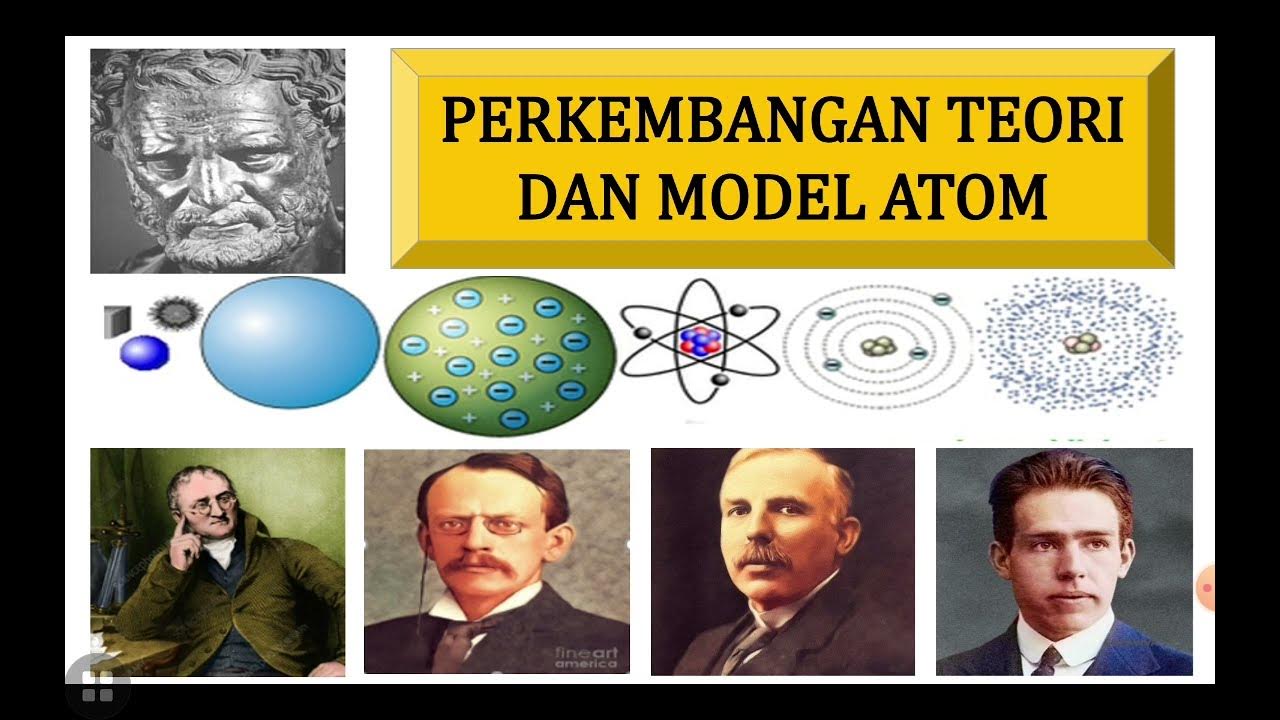Struktur Atom • Part 1: Perkembangan Model Atom
Summary
TLDRIn this General Science channel video, Christian Sutantio explores the development of atomic theory, starting from Democritus' concept of indivisible particles to modern quantum mechanics. The video covers Dalton's atomic theory, Thomson's discovery of electrons, Rutherford's nuclear model, Bohr's planetary model, and finally, the probabilistic nature of electrons as described by quantum mechanics. It's an educational journey through the evolution of our understanding of atoms, suitable for high school students studying chemistry.
Takeaways
- 😀 The script is an educational video discussing the development of atomic models for high school chemistry students.
- 🔬 The term 'atom' originates from ancient Greek, meaning 'indivisible', but modern science has shown that atoms consist of subatomic particles: protons, neutrons, and electrons.
- 🕰 John Dalton proposed the first modern atomic theory in 1803, which included four postulates about the nature of atoms and their behavior in chemical reactions.
- 🌐 Dalton's theory could not explain the differences between elements, the electrical properties of matter, or how atoms bond with each other.
- 👨🔬 J.J. Thomson discovered the electron in 1900, challenging Dalton's idea of indivisible atoms and introducing the 'plum pudding' model of the atom.
- 🔋 The plum pudding model suggested that electrons were evenly distributed within a positively charged sphere, maintaining electrical neutrality.
- 🎯 Ernest Rutherford's gold foil experiment in 1910 led to the nuclear model of the atom, which proposed a small, dense, positively charged nucleus with electrons orbiting around it.
- 🌀 Niels Bohr improved the atomic model in 1913 by introducing the concept of electron shells or 'energy levels', where electrons orbit in specific paths rather than randomly.
- 🚫 Bohr's model had limitations, such as not being able to explain why electrons don't fall into the nucleus due to the attractive electrostatic force.
- 🌌 Quantum mechanics, introduced by Erwin Schrödinger in 1926, describes electrons not as particles with definite positions but as probability clouds or 'orbitals', indicating regions of space where electrons are likely to be found.
- 📊 The quantum mechanical model uses a probabilistic approach to represent the likelihood of finding an electron in a particular region around the nucleus, rather than a fixed path or shell.
Q & A
What is the origin of the term 'atom'?
-The term 'atom' comes from the Greek word 'atomos', which means 'indivisible', derived from 'a-' (not) and 'tomos' (cuttable).
Who first proposed the atomic theory?
-The first atomic theory was proposed by the Greek philosopher Democritus around 460-370 BCE.
What are the four postulates of Dalton's atomic theory?
-Dalton's atomic theory includes: 1) Every element consists of indivisible particles called atoms; 2) Atoms of the same element are identical in mass and properties; 3) Atoms of different elements have different properties and masses; 4) Atoms can neither be created nor destroyed in chemical reactions.
What is the significance of the Thomson model of the atom?
-The Thomson model introduced the concept of the atom as a 'plum pudding', with electrons (discovered by Thomson) evenly distributed within a sphere of positive charge.
What experiment led to the proposal of Rutherford's atomic model?
-Rutherford's atomic model was proposed based on the gold foil experiment, where alpha particles were fired at a thin gold foil, leading to the discovery of a small, dense, positively charged nucleus.
What are the main components of an atom according to Rutherford's model?
-According to Rutherford's model, an atom consists of a small, dense, positively charged nucleus surrounded by electrons orbiting at a relatively large distance.
What is the concept of 'electron shells' or 'energy levels' in Bohr's atomic model?
-In Bohr's model, electrons orbit the nucleus in specific energy levels or 'shells', with each shell representing a distinct energy state.
How does the quantum mechanical model of the atom differ from previous models?
-The quantum mechanical model, proposed by Erwin Schrödinger, suggests that the position of electrons in an atom cannot be determined exactly but is described by a probability distribution, known as an electron cloud or orbital.
What is the limitation of Bohr's model regarding the behavior of electrons?
-Bohr's model does not explain why electrons do not spiral into the nucleus, despite the attractive force between the positively charged nucleus and negatively charged electrons.
What is the concept of 'isotopes' in the context of atomic theory?
-Isotopes are variants of atoms of the same element that have the same number of protons but different numbers of neutrons, resulting in different atomic masses.
How does the quantum mechanical model describe the probability of finding an electron in a certain region?
-The quantum mechanical model describes the probability of finding an electron in a certain region by using an electron cloud or orbital, where the density of dots represents the likelihood of the electron's presence in that area.
Outlines

This section is available to paid users only. Please upgrade to access this part.
Upgrade NowMindmap

This section is available to paid users only. Please upgrade to access this part.
Upgrade NowKeywords

This section is available to paid users only. Please upgrade to access this part.
Upgrade NowHighlights

This section is available to paid users only. Please upgrade to access this part.
Upgrade NowTranscripts

This section is available to paid users only. Please upgrade to access this part.
Upgrade NowBrowse More Related Video

Kimia X - Struktur Atom #3 | Perkembangan Teori dan Model Atom

History of the Atom (Atomic Theory)

The Quantum Mechanic Model: HISTORY OF ATOM | Grade 9 Science Quarter 2 Week 1

STRUKTUR ATOM DAN SISTEM PERIODIK UNSUR : Struktur Atom - Materi KIMIA SMA Kelas 10, TKA SMA |Part 1

Struktur Atom

O Modelo Atômico de Dalton x Thomson
5.0 / 5 (0 votes)